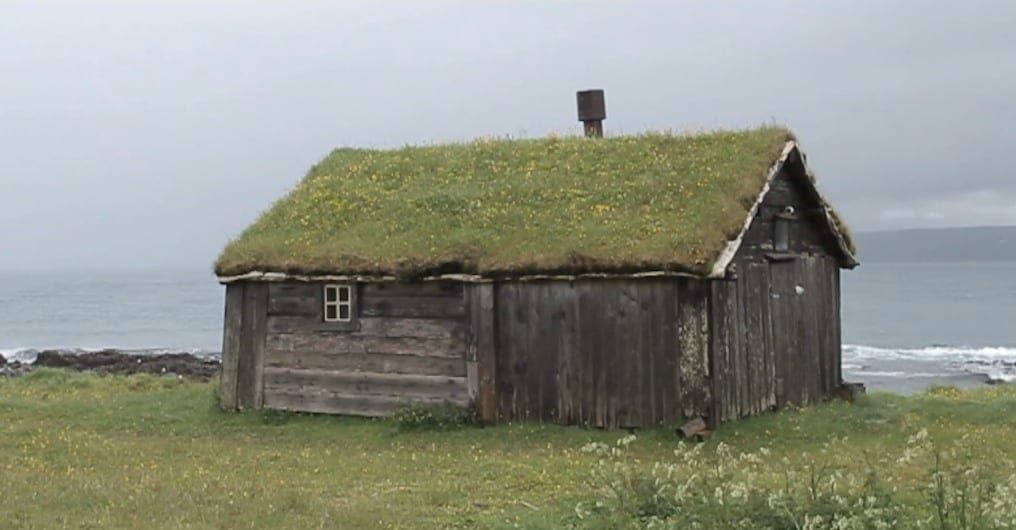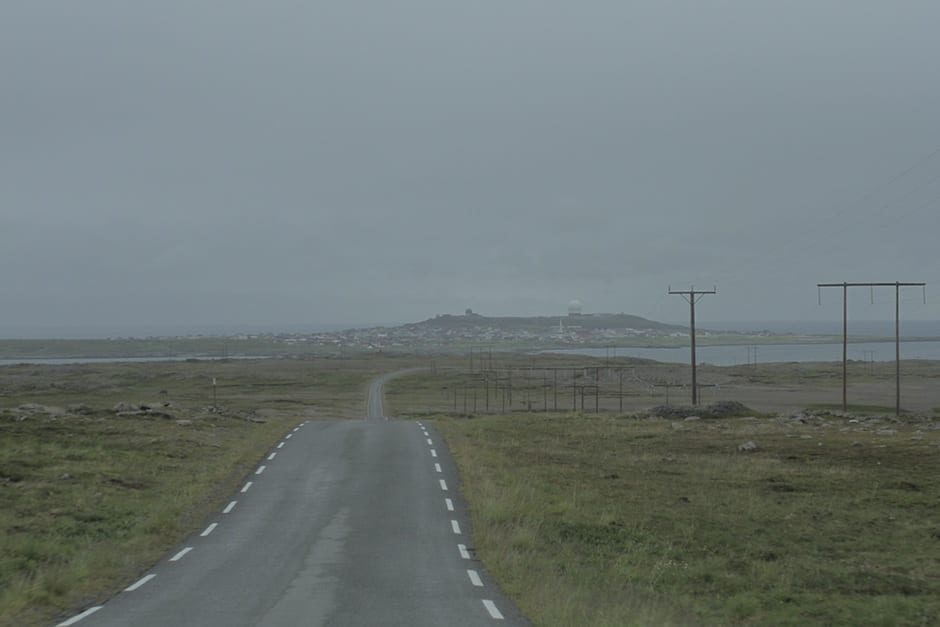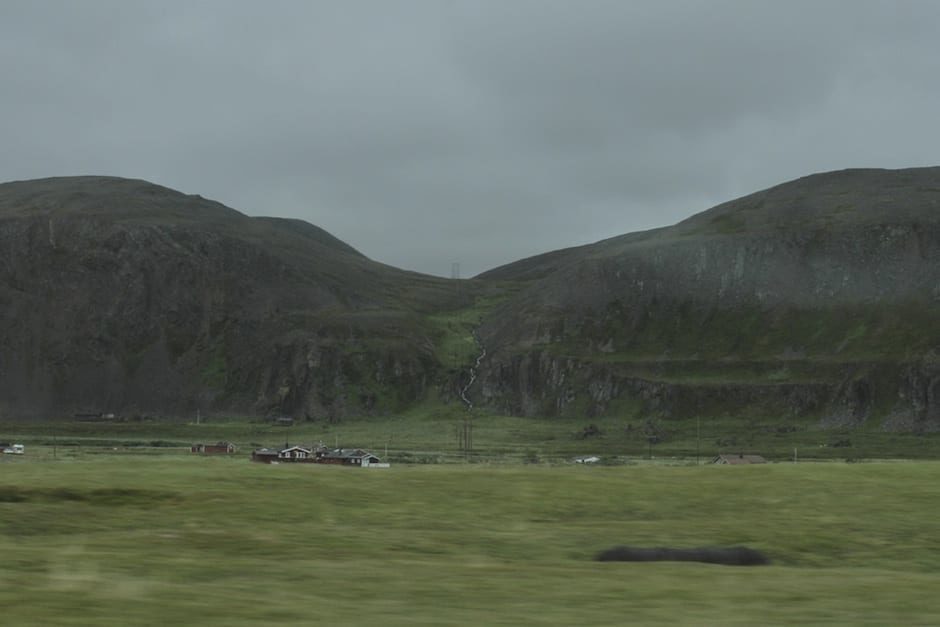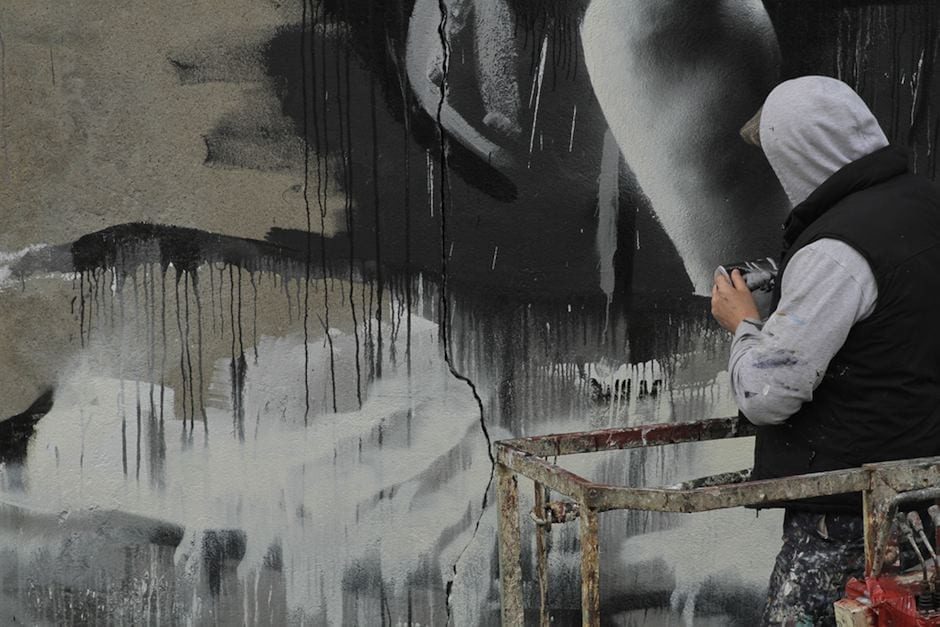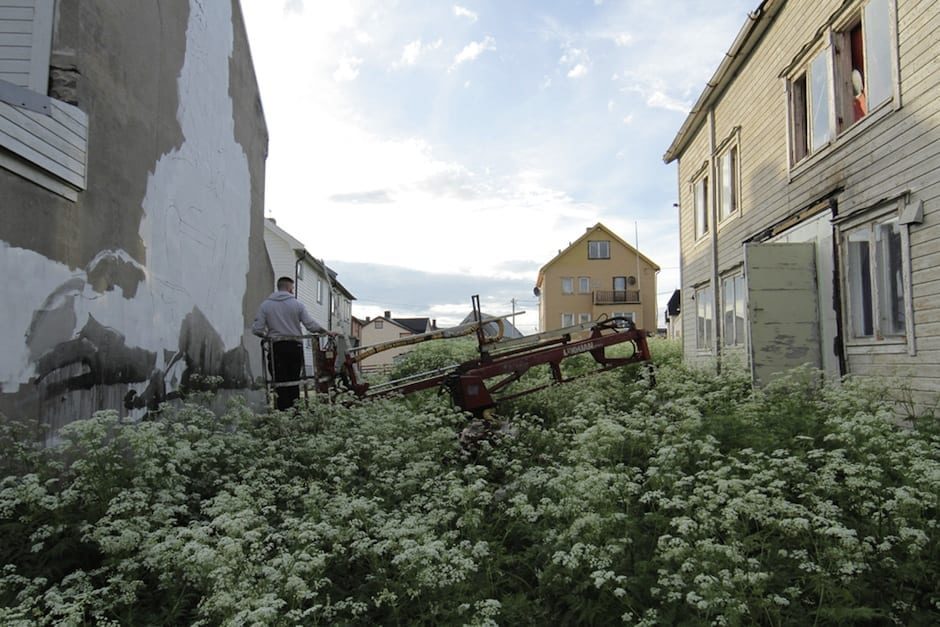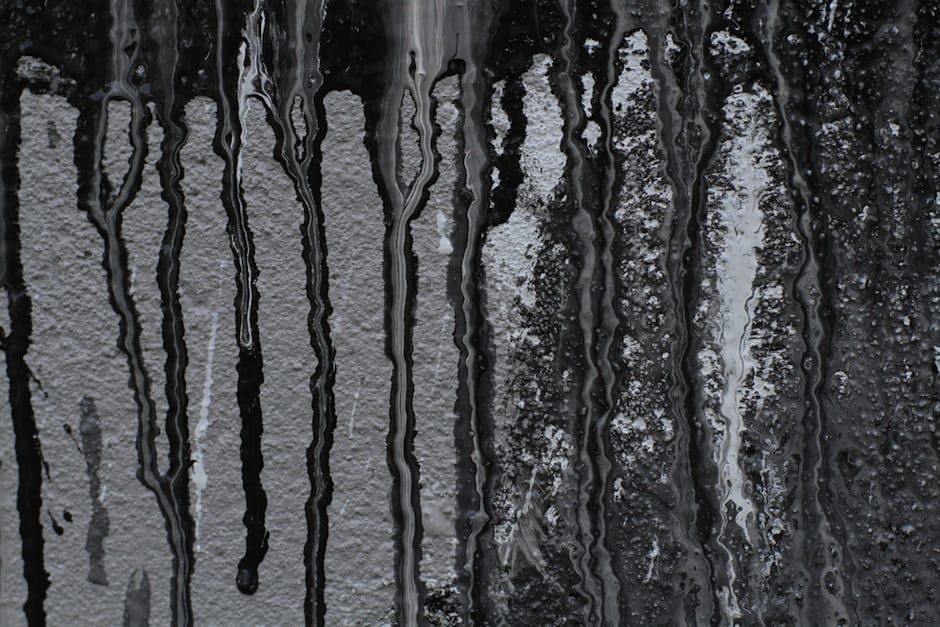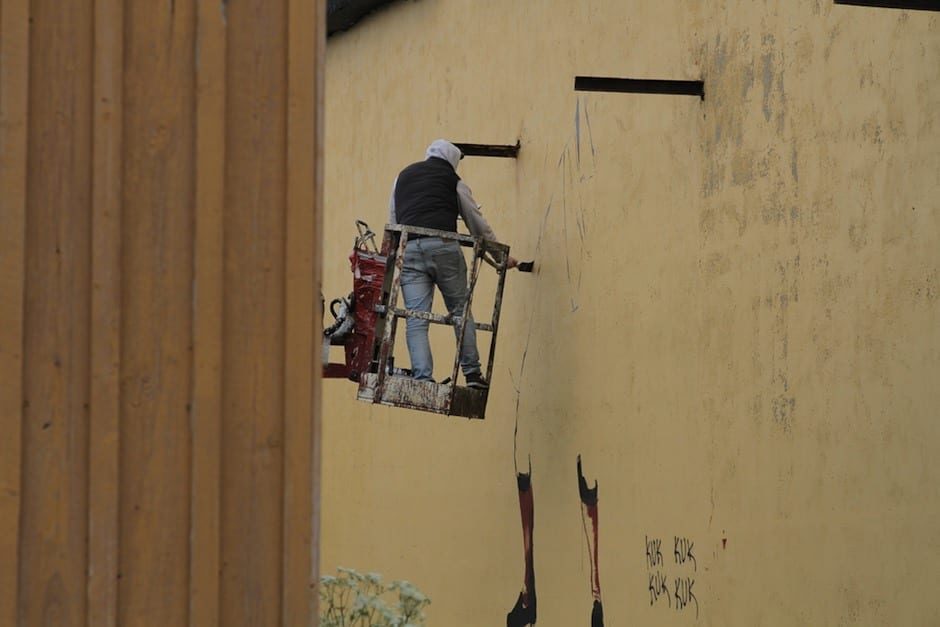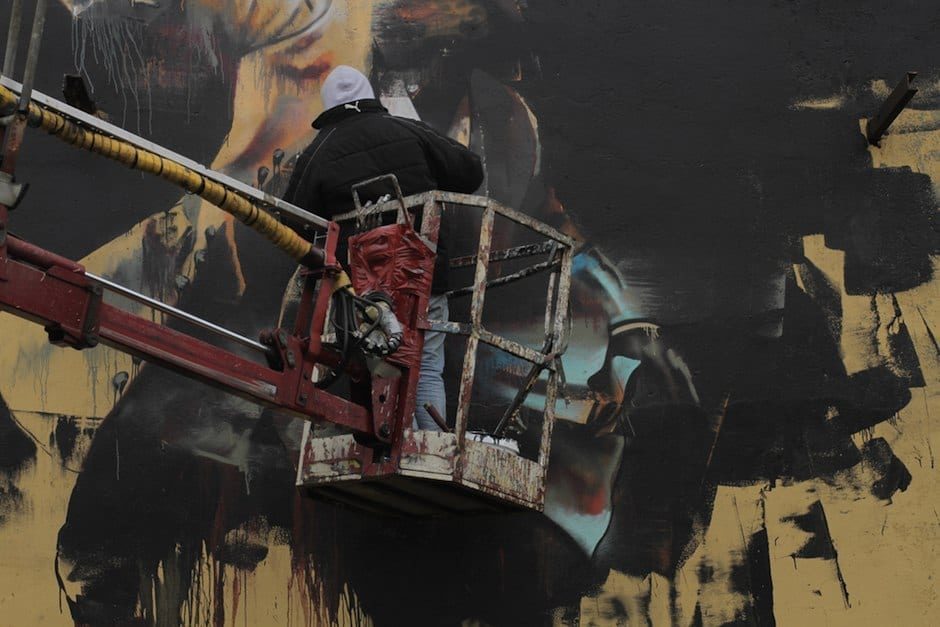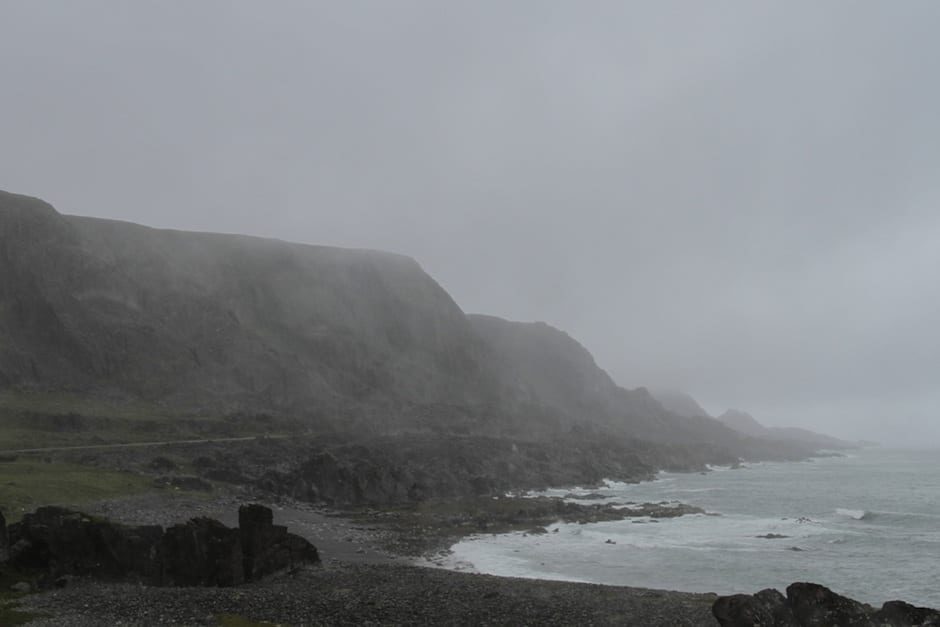The locked-off frames interspersed with the road footage give a perfect simplicity to the remoteness of the landscapes. Did the film simply come together as you shot, or did you have a good idea of what you wanted to achieve before hand?
I went to Vardø with a loose idea of what film I wanted to make. This was my third film with Conor Harrington and I wanted to leave his working process out of the narrative and explore him as an artist and his work within the landscape.
Right from day one I was constantly filming as I went. After reviewing the rushes every night, I found myself returning to a number of locations to refine and re-compose specific shots. It was really liberating to work in this way, spending half the time with Conor and half the time documenting the landscape.
Please tell us about the shoot, any major challenges?
It was just myself and Conor, it took us about 12 hours to get to the island where we stayed for seven days in the middle of July. The major challenge was the arctic winds, which got as cold as -8. It was so strong and cold, at times I couldn’t feel my hands and feet! It was only in the post stage where I found out a good proportion of shots were ruined because of the wind gently juddering the tripod.
Being on the island inside the Arctic Circle meant that we were working in incredible conditions that would change from winter to summer within a matter of hours. We had 24 hours of natural light, it was hard to know when to stop because the light on the landscape was constantly changing which forces you to pay attention.
On a personal project like this it’s more about creating a narrative and finding the shots. Having a minimal kit means I can be mobile and have an instant reaction to what I experience. I took my camera, four prime lenses and a fluid head tripod, there was no need to make it complicated. It was the perfect set up as we had access to bicycles, so getting around the island became hassle free and a lot of fun!
Was the music created after the edit? Did you ever consider any alternatives?
I usually have a clear idea of what I want from the music and how it will work with the narrative. For me, the music is as important as the visuals and wherever possible I write my own once I’ve got an assembly edit together.
I had no intention to use voice over or Foley sounds on Old Norse, with this film I wanted to explore something more cinematic using instruments I hadn’t worked with before. I teamed up with musician Lucinda Chua who composed and performed the score on piano and cello.
I recorded her playing, giving her the structure and direction but allowing her space to do her own thing. I engineered the track myself, adding some guitars and textures. We then mixed the track together so were both happy, after this I re-worked the edit to the score and fortunately it all came together.
What was your editing process, was it more about orchestrating textures and colours than following a chronological order? Did it become instinctive what footage to keep in and discard or was it quite difficult deciding the flow?
The order is loosely chronological but I worked to a structure in three sections: introducing the journey and the artist, featuring the landscape then revealing the finished works. My biggest worry was how the pace of the edit would come across – I kept it simple, cutting to the chime of the piano. I guess sometimes you’ve just got to trust your gut instinct.
See Andrew’s photographic stills in Related Content
LINK:
